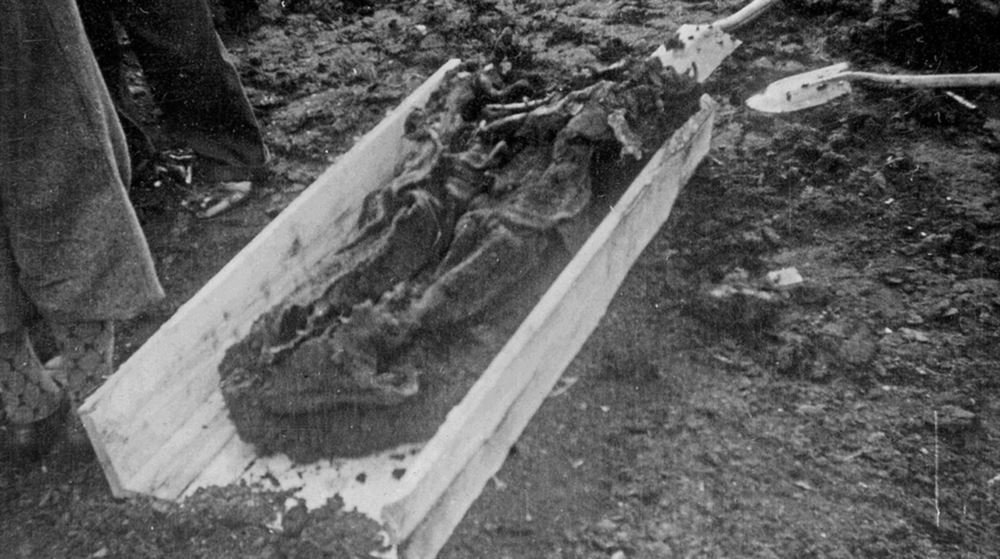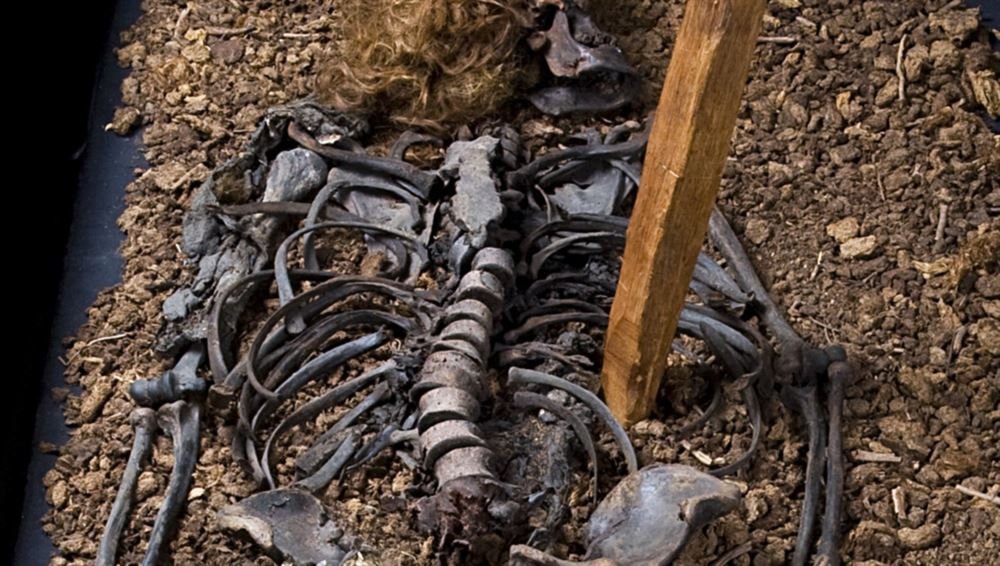A. Sutherland - AncientPages.com - About 80 years ago, a mysterious bog body of an unknown man was discovered in Sweden. The corpse was labeled the Bocksten Man. The man met a brutal death. He had three stakes driven through his chest. Archaeologists and historians have tried to solve this 650-year-old murder mystery and reveal the identity of the Bocksten Man, but without luck so far.
This may change now, as scientists are about to learn completely unknown facts about the man who today is famous for having one of the most complete surviving set of garments from the 14th century.

Can DNA technology finally solve a 650-year-old murder mystery and reveal the identity of the Bocksten Man? Was he a local man or a foreigner? Was he really murdered or are we witnessing evidence of ancient superstition?
It remains unknown how old he was when he died, but scientists estimate he must have been between 30 and 35 years-old at the time of his death.
He was found 80 years ago near Varberg, Halland County, Sweden by the siblings Thure and Gulli Johansson. The Bocksten Man is today the most legendary bog body in Scandinavia. Shortly after the gruesome discovery, the corpse was put on display at the museum at Varberg fortress.

People became curious and wanted to learn more about this mysterious person who died sometime between 1350 and 1370. Scientists were just as intrigued as ordinary people, but there were more questions than answers.
Was the Bocksten Man really murdered?
It remains unclear if the Bocksten Man was really killed, although it is assumed it is the case. However, it is also possible the corpse is evidence of ancient superstitions present in the area where he was found. Ancient Scandinavian legends tell that you can prevent the dead from rising again by driving a stake through their heart. Similar ancient beliefs are found world-wide.

So, maybe the Bocksten Man was already dead when someone drove the three stakes though his chest. We really don’t know, at least not yet.
The Bocksten Man was a man of fashion
Pablo Wiking-Faria, researcher and curator at Halland’s Cultural Heritage Museum has studied the Bocksten Man for many years. According to Pablo Wiking-Faria, the Bocksten Man was rather weak.
He didn’t have muscles and we can therefore assume he was not an ordinary worker or farmer. It is much more likely that he was a man of the upper class or a merchant. The clothes he wore reveal he was a man who appreciated fashion.
DNA will reveal the identity of the Bocksten Man
Christina Andersson-Wiking, curator at the New Museum of Cultural History in Varberg says DNA will now determine the color of his hair and eyes. So far it has been assumed he was red-haired and blue-eyed, but the red hair color can also be because the acids in the bog have discolored it.
He could be a brown-eyed, dark-haired man. DNA tests will also reveal where he was born and came from. The Bocksten Man does not have to be a local. Perhaps he came from another part in Sweden, or maybe he was from Germany or another country.
It is also possible he was a Dane as at the time of his death Halland County where he was found dead, belonged to Denmark.
There are very few surviving ancient document from this time, which is the reason why scientists must rely on DNA technology to solve this 650-year-old murder mystery.
Experts are now conducting DNA studies of the Bocksten Man and the results will be announced soon.
It will also be every exciting to find out if the Bocksten Man has any living relatives.
Copyright ©AncientPages.com
Expand for referencesArticle is based on Swedish news media





